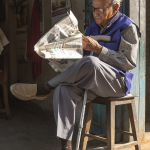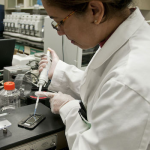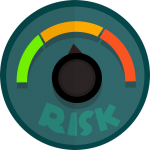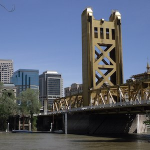An abundance of caution, we have all heard the phrase. And while there are nuances, its gist is, for this particular situation, we are extra careful. And in what situations does that apply? For the most part, situations in which there is a remote chance of a catastrophic outcome that puts its thumb on the scale when measuring risk and benefit. But like the thumb on the grocery scale, it throws off the enterprising of weighing choices and often has stealth costs of its own.
risk
Risk, the carbon footprint of eating local, Happy Birthday Betty Crocker, and an employee review.
I never really got into fishing, although I have many friends and family who love it. While it’s not the reason I don’t fish, I was surprised to find out recently how hazardous it is – according to statistics, fishing accounts for about 80,000 injuries every year in the US alone, [1] and that doesn’t even get into things like drowning, electrocution, and so forth. And when we look at the dangers of commercial fishing, things get even worse. Reading that chapter made me wonder why any sane person would ever pick up a rod and reel and go anywhere near the water.
This week I took a dive into the rising price of food and the way Subway has run afoul of labeling. Then I read a piece on the tradeoff between taking a risk and an abundance of caution.
Fear sells, which is why news outlets provide so much of it. But constant bad news is bad for our health. Turn off the TV and social media.
How well we do in assessing the economic outcomes of the COVID-19 lockdown will determine how well we do in the next match. And there will be a next match.
At the current time, influenza remains the far bigger threat to global public health than COVID-19. Though COVID-19 has a higher case-fatality rate, influenza infects far more people. Of course, that could change.
The next Beyond Science and Decisions Workshop XI will be held on February 18-20, 2020 in Cincinnati, Ohio, at the Taft Auditorium of the National Institute for Occupational Safety and Health (NIOSH).
From a public health perspective, what's the biggest preventable cause of cancer? Pesticides? Poor diet? Pollution? UV light? No, no, no, and nope. It's tobacco, by far. Obesity and infectious diseases are #2 and #3.
A recent study identifies a new risk calculator, one which better predicts the surgical outcomes of complications or death. And while it's an improvement, can it be a useful tool? After all, how many people gamble with their loved ones?
Nine American tourists have died this year under mysterious circumstances in this Carribean nation. Should Americans still visit it? Well, yes. As it turns out, going there is safer than driving ... or visiting Mexico. We crunched the numbers.
California is a trendsetter. It’s home to world-class wine, championship basketball teams, beautiful weather and legendary cities like San Francisco. But sadly, it's also a trendsetter when it comes to wrongheaded public health policy. There’s no better example of this than Proposition 65, a law that as of 2016 has cost California businesses close to $300 million.











